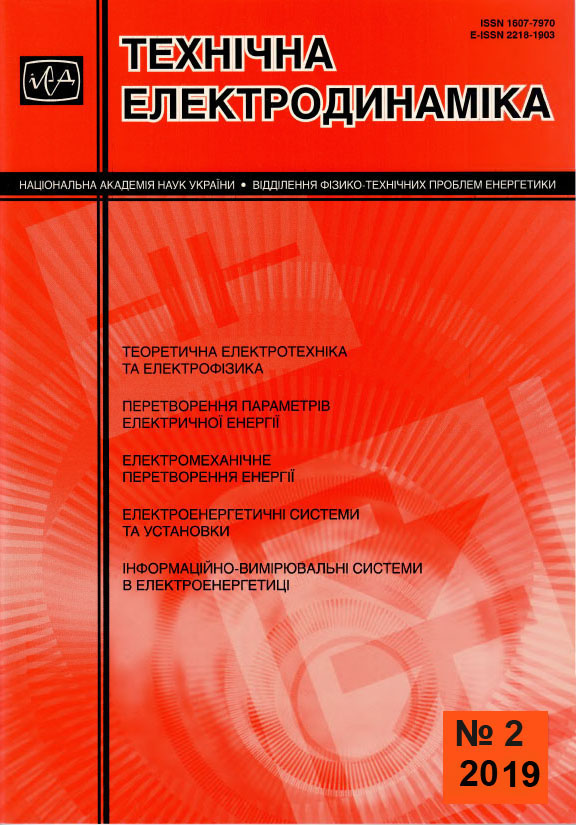Abstract
А conditional linear random process (CLRP) has been defined as the stochastic integral of a random function with respect to a process with independent increments. When the process with independent increments is Poisson then CLRP represents the signal as a sum of a large amount of stochastically dependent impulses whose times of occurrence are
the times of a Poisson process. For example, the electricity loads of the electrical power systems, also the processes of gas and water consumption, electrophysiological signals et al. can be modelled using CLRP. Moreover, the stochastic periodicity of the signals can be taken into account. A random coefficient autoregressive model has been shown to be a member of the class of discrete-time CLRP and suitable for estimation purposes. The main goal of the paper is to develop the procedure for the parameter estimation of random coefficient periodic autoregressive (RCPAR) model. The model has periodic parameters and consequently periodic probability distribution. The estimations have been obtained as a result of applying the least squares method to the set of L (where L is a period) stationary and jointly stationary subsequences of RCPAR model. The simulation results have been presented which confirm the consistency of the developed estimations, that is, the precision of the estimates increases with the increase in the sample size. The results of short-term electricity consumption forecasting of the enterprise (which belongs to the class of small and medium-sized) have been presented and analyzed using RCPAR model. References 16, tables 2, figures 4.
References
Babak S.V., Myslovich M.V., Sysak R.M. Electrotechnical equipment statistical diagnostics: monograph. Kyiv: Institut elektrodinamiki NAN Ukrainy, 2015. 456 p. (Rus)
Zvarych V.M. Diagnostics systems of power engineering equipment on the linear autoregressive models basis: author's abstract of Dr. tech. sci. diss.: 05.13.05. Instytut elektrodynamiky NAN Ukrainy. Kyiv. 2013. 35 p. (Ukr)
Marchenko B.G., Scherbak L.N. Linear random processes and their applications. Кyiv: Naukova dumka, 1975. 143 p. (Rus)
Mlynko B.B., Fryz M.Ye., Scherbak L.M. Methodology of stochastic signal mathematical modelling using conditional linear random processes. Modeliuvannia ta informatsiini tekhnologii. Zbirnyk naukovykh prats. Кyiv: Instytut problem modeliuvannia v enerhetytsi im. G.Ye. Pukhova NAN Ukrainy, 2016. Issue 77. Pp. 20–25. (Ukr)
Fryz M.Ye. Properties of conditional linear processes and their application in the problems of stochastic signal
mathematical modelling. Matematychne ta kompiuterne modeliuvannia. Seria: Tekhnichni nauky: zbirnyk naukovykh prats. 2012. Issue 6. Pp. 228–238. (Ukr)
Pierre P.A. Central limit theorems for conditionally linear random processes. SIAM Journal of Applied Mathematics. 1971. Volume 20. Issue 3. Pp. 449–461. DOI: https://doi.org/10.1137/0120048
Gardner W.A., Napolitano A., Paura L. Cyclostationarity: Half a century of research. Signal Processing. Elsevier, 2006. No 86 (4). Pp. 639–697. DOI: https://doi.org/10.1016/j.sigpro.2005.06.016
Nicholls D.F., Quinn B.G. Random Coefficient Autoregressive Models: an Introduction. Lecture Notes in Statistics, 11. New York: Springer Verlag, 1983. 154 p.
Aknouche A., Guerbyenne H. Periodic stationarity of random coefficient periodic autoregressions. Statistics and Probability Letters. 2009. Volume 79. Issue 7. Pp. 990–996. DOI: https://doi.org/10.1016/j.spl.2008.12.012
Franses P.H., Paap R. Random-coefficient periodic autoregressions. Statistica Neerlandica. 2011. Volume 65. Nо 1. Pp. 101–115. DOI: 10.1111/j.1467-9574.2010.00477.x
Humeau S., Wijaya T.K., Vasirani M., Aberer K. Electricity load forecasting for residential customers: Exploiting aggregation and correlation between households. Sustainable Internet and ICT for Sustainability (SustainIT). Palermo, Italy, 30-31 October 2013. Pp. 1–6. DOI: 10.1109/SustainIT.2013.6685208
Fryz M.Ye. Conditional linear random sequences. Zbirnyk naukovykh prats Instytutu problem modeliuvannia v enerhetytsi im. G.Ye. Pukhova NAN Ukrainy. 2011. Issue 60. Pp. 41–45. (Ukr)
Magnus J.R., Neudecker H. The elimination matrix: Some lemmas and applications. SIAM Journal on Algebraic and Discrete Methods. 1980. Volume 1. Issue 4. Pp. 422–449. DOI: https://doi.org/10.1137/0601049
Chernenko P.O., Martyniuk O.V., Miroshnyk V.O. Modeling and short-term forecasting of technology component of electrical load of the regional electric power system. Tekhnichna Elektrodynamika. 2016. No 4. Pp. 68–70. (Ukr) DOI: https://doi.org/10.15407/techned2016.04.068
Sevlian R., Rajagopal R. A scaling law for short term load forecasting on varying levels of aggregation. Electrical Power and Energy Systems. 2018. Volume 98. Pp. 350 – 361. DOI: https://doi.org/10.1016/j.ijepes.2017.10.032
Rodrigues F., Cardeira C., Calado J.M.F. The Daily and Hourly Energy Consumption and Load Forecasting Using Artificial Neural Network Method: A Case Study Using a Set of 93 Households in Portugal. Energy Procedia. 2014. Volume 62. Pp. 220–229. DOI: https://doi.org/10.1016/j.egypro.2014.12.383

This work is licensed under a Creative Commons Attribution-NonCommercial-NoDerivatives 4.0 International License.
Copyright (c) 2022 Array






